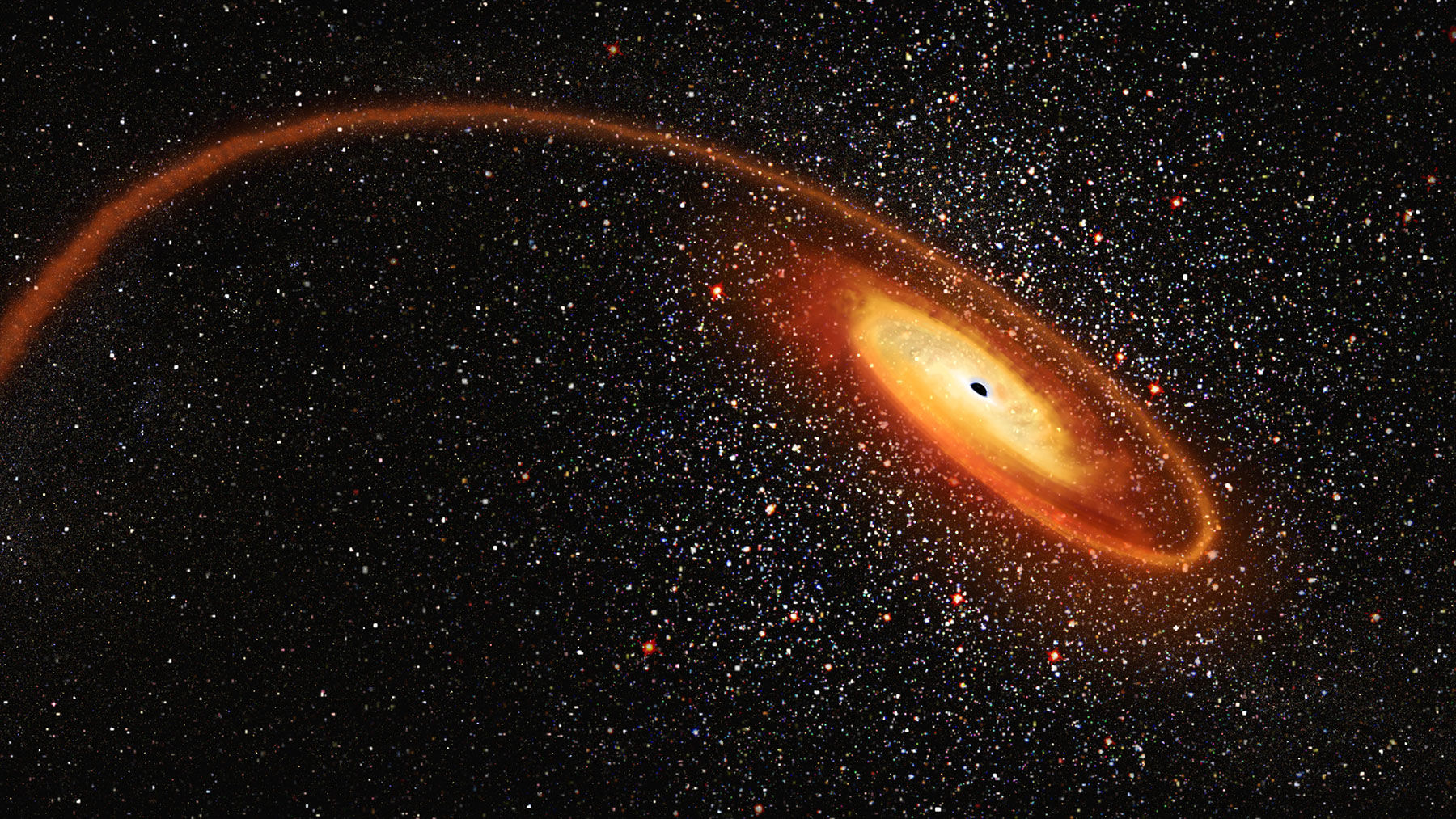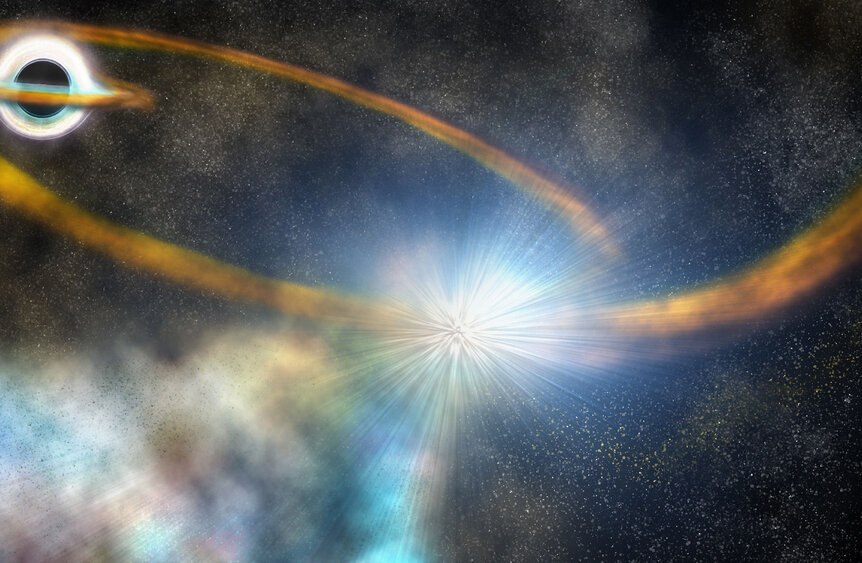Create a free profile to get unlimited access to exclusive videos, sweepstakes, and more!
Watch a black hole tear half a dozen stars to shreds
Simulations show how stars can survive a black hole.

One of the sweatiest apocalyptic events you can get on a stellar scale is a star torn apart by a black hole.
This sort of thing, called a tidal disruption event, or TDE, was first suspected to be the cause of high-energy X-ray emission in distant galaxies in the early 1980s. Since then, numerous surveys have detected dozens of possible TDEs, all occurring in galaxies hundreds of millions of light years away. They are very rare in a given galaxy, but if you look at enough galaxies you'll see them.
They happen when a star gets to close to a massive black hole. We know that the centers of big galaxies have supermassive black holes in them, with millions or billions of times the mass of the Sun. Lots of stars orbit around them, and over time gravitational interactions between these stars can send one flying much closer in to the black hole.
The force of gravity depends on distance. As the star approaches the black hole, the side of the star facing the black hole is pulled harder — much harder — than the far side. This is called the tidal force, and it stretches the star. If the star gets close enough, the tides can tear it apart. Gas streams away from the star, whips around the black hole on an elliptical orbit, then comes crashing back in. When it does it releases huge amount of high-energy radiation (like X-rays). And I do mean huge: In 2019 one was spotted in a galaxy over 200 million light years away, and it blasted out ten billion times as much energy as the Sun does. That single event outshone the entire host galaxy.
Understanding these events is difficult, because the math is fierce. You need to model the internal structure of a star and include the gravitational effects of the black hole using Einstein's General Theory of relativity. It's daunting.
But not impossible. For the first time, astrophysicists have done just that, modeling what happens to a star when it makes the terrible decision to get too close to a black hole. Simulated in a computer, they threw stars of eight different masses (from 0.15 to 10 times the Sun's mass) at six monster black holes that ranged from 100,000 to 50 million solar masses to see what would happen.
The results were somewhat surprising.
If you woke me up out of a cold sleep and asked me what the biggest factor would be for a star to survive the passage versus getting torn apart, I'd say "size, so mass." The bigger the star the easier it is in general for a black hole to rip them apart, because tidal forces are strongest across big objects. More massive stars are bigger, so I'd guess low mass stars survive, high mass ones don't.
If you then gave me a moment to wake up and think, I'd say, "No, wait! Density!" The denser an object is, the better it can hold itself together against tides.
It turns out, that's correct. Watch:
Low-mass stars are smaller and can survive while higher mass stars are bigger and get ripped apart. But it's not that simple. The lowest mass stars are pretty dense, but the density gets lower around a third of a solar mass up to a half, then increases again around 0.7 times the mass of the Sun. Somewhere between 1 and 3 solar masses the density starts to gets lower again. This all depends on how rapidly the star fuses hydrogen into helium and how the energy moves from the inside to the outside that dictates a star's internal structure.
Lower mass stars fuse hydrogen slowly, and the surrounding material in the star is dense. High-mass stars have incredibly high rates of fusion, which puffs them up, making them lower density. But their internal structure changes in complicated ways with mass in between those values, which changes their density as well. In the end it's the star's structure that saves it or dooms it in a close pass.
In some cases the stars are torn apart completely. In others (the lowest mass ones) they survive nearly intact. In between, some get pulled apart but just barely, and retain enough density in their center to gravitationally pull material back. They survive, at the cost of losing up to half their mass. It's that material that gets whipped around the black hole and blasts out the hellish energy. Still, that's incredible, and shows that stars can be pretty resilient.
This was one result of many the astronomers found. One I thought was interesting is that you have to use relativity to get these calculations correct. For a lot of physics (like planetary orbits around the Sun, or how the Moon induces tides on Earth) you can use Newton's idea of how gravity works, but Einstein improved on Newton with relativity, which includes factors for when gravity is extremely strong and velocities very high. If you use Newton's formulation of gravity the numbers can be off by a significant margin. That's usually the case for black holes (where gravity is strong indeed) but the amount of the difference surprised me.
Calculations like these will help astronomers model the physics of TDEs, including why it is we see what we see from them. They occur so far away we don't see any details at all! We only get radiation from them in the form of light, and what we see depends on a lot of factors: The mass and internal structure of the star, its orbit around the black hole, the mass of the black hole, and more. Knowing the physics of those factors will allow predictions of how the energy is released (how much overall and how that changes with time) which can then be matched to observations.
And if they don't match, then the models will be changed: more factors added, better simulations run, until it all squares away (you hope). At that point, we'll have a far better understanding of these ridiculously spectacular and terrifying events.



























